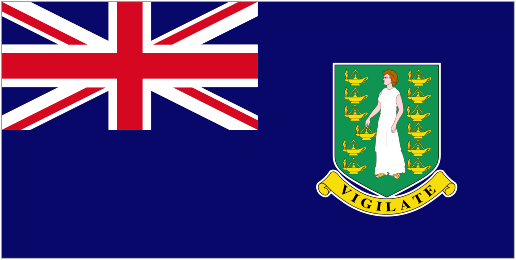Even though we are much smaller in size than Trinidad, Rio and New Orleans, our island is rich in history and culture. We celebrate our carnival during August, to observe our 1834 slavery emancipation. Our Carnival is the way we celebrate our heritage and culture.
The August Festival becomes the islands highlight - spirits of joy, with lots of dances, parties, parades, J'Ouvert (street revelers dance behind live bands in the early morning), Queen Shows, Prince & Princess Competition, Cooney Island, nightly events and live shows. It is a visual experience coupled with the aromas of Caribbean delicacies and sounds of joyful laughter and music. Another highlight of the festivities is the Horse Race that is held on August Tuesday at the Little A Race Track on Tortola. This is a well-attended event where locals and visitors alike, partake in the competition and activities.
Tortola is one of the islands that comprise the British Virgin
Islands. It has Road Town as its capital on the southern shore of the
island. The other islands that are associated with the British Virgin Islands are Anegada,
Guana Island, Mosquito Island, Peter Island, Jost Van Dyke and Virgin
Gorda. It has constructed a large yacht chartering business, which is
able to take people to these islands.
Rugged mountain peaks characterize the entire
southern coast while the northern coastline contains white sandy
beaches. Banana trees, mangos and clusters of palm help adorn the
scenery. The inhabitants are mostly descendents from slaves and/or slave owners. There is a mixture of British and West Indian influence in their culture. The hybrid Caribbean culture can be seen in their music, food and the sloops that are made for fishing. Calypso is very much alive there as the sounds are social
commentary of the local political and social issues. Fungi bands play
scratch instruments such as gourds and washboards. Carnival began in the
British Virgin Islands as a celebration of the slave emancipation.
Jumbie stories, which are basically African folklore, have been passed on for many generations. Storytelling traditions still persist today, even though it is in a more structured setting such as community halls and festival gatherings.
Christopher Columbus on his second voyage in
1493 named the second largest Virgin Island, Virgin Gorda or "Fat
Virgin" because he perceived to view the mountain on the island like a
protruding stomach. Virgin Gorda is a quiet, peaceful place where
privacy and solitude are very evident.
Arawak Indians who originated on the northern coast
of South America in the Orinoco basin settled in the British Virgin
Islands around 100 B.C. Over a thousand years later, some other Indians
overran them from the Arawak's original home. The Carib Indians were much more
aggressive and warlike. Columbus came to the islands on his second
voyage and named the places, Las Virgenes - The Virgins.
The Spanish did not pay much attention to the Virgin Islands as they settled for a brief period of time at Virgin Gorda to mine copper. These islands were
visited by many infamous people such as Henry Morgan, Sir Francis Drake
and Sir John Hawkins whose occupation was to plunder the Spanish
galleons on their way back to Spain, kill the sailors and take the gold
back to England for Queen Elizabeth I.
The Dutch established a permanent settlement in
Tortola in 1648. The English in turn ousted the Dutch from Tortola and
Virgin Gorda, and introduced sugar cane and slaves to the Virgin
Islands. The first Quaker John Pickering settled in Tortola and later
became the first Governor. It was during this time that the people here
changed from pirating to establishing the agricultural industry. Between the mid-18th and early nineteenth century, the islands were
successful in producing sugar, cotton, rum, indigo and spices. This
collapsed there after due to a number of different reasons. The slaves
revolted and slave auctions ended in the early nineteenth century. The
emancipation was granted in the 1830's, most places had to work a
four-year apprenticeship program. Former slaves were
able to buy and hold property legally. Sugar beet was introduced in
Europe in Europe and the U.S.A. and the settlers along with their
capital left for bigger and better markets.
The United States purchased the Danish West
Indies (St. Thomas, St. John and St. Croix) as a strategic outpost in
the Caribbean. The British encouraged farming, livestock, vegetables
and fishing in the 1930 and 940s. In the 1960s Laurence Rockefeller
leased some land. This was followed
by the opening of the airport at Beef Island in 1968 and the opening of
the first charter yacht company in 1969. Meanwhile, the islanders were finally given the right to administer their own local affairs in 1967. The first bareboat charter company was established in the early nineteen seventies
and the British Virgin Islands became a major sailing destination in
the Caribbean. The International Business Companies Act was passed in
the nineteen eighties and this brought about the advent of the offshore
banking industry. This also enabled many wealthy tourists to visit the British Virgin Islands.

No comments:
Post a Comment